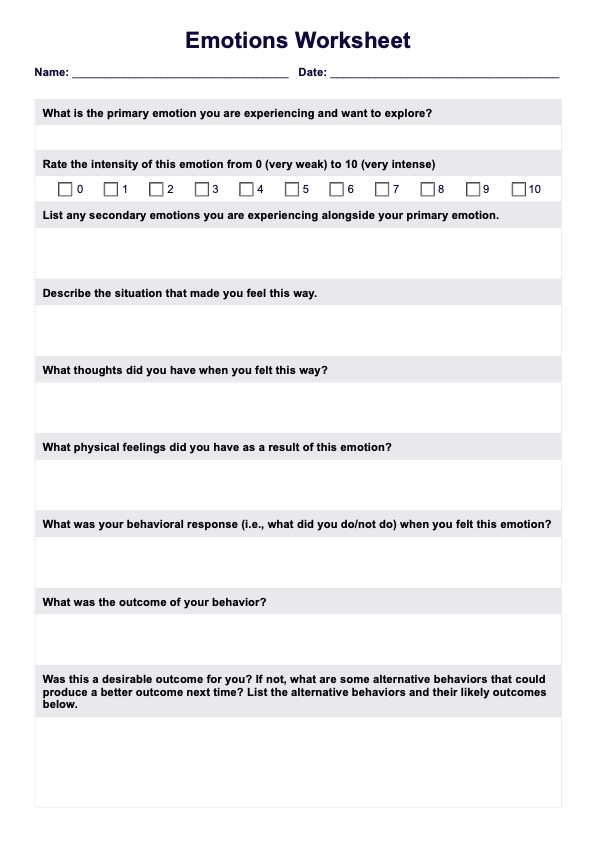This Emotions Worksheet can be completed by anyone who wishes to explore how their emotions impact their thoughts and behaviors, or who wants to correct potentially harmful behaviors brought on by an inability to cope with certain emotions. We have ensured this worksheet can be completed independently by anyone aged from teenagers upwards, and it can also be a useful tool in parallel with therapy or counseling for practitioners.

Emotions Worksheets
Help your clients get in touch with their emotions and uncover how their feelings, thoughts, and behaviors are interconnected with our free PDF Emotions Worksheet.
Emotions Worksheets Template
Commonly asked questions
Yes, this worksheet can be completed for any emotion your client wishes to explore in greater detail – positive or negative. If it is a positive emotion or a negative emotion with a positive outcome, the final section of the worksheet may not apply to your client in this instance.
This depends on if your client is happy to return the worksheet to you, or if they want to hold onto it themselves and simply use the process of completing the worksheet as their therapeutic intervention. In the event your client returns the worksheet to you for use as part of their treatment, then you must ensure it is stored securely as part of their clinical record.
EHR and practice management software
Get started for free
*No credit card required
Free
$0/usd
Unlimited clients
Telehealth
1GB of storage
Client portal text
Automated billing and online payments











